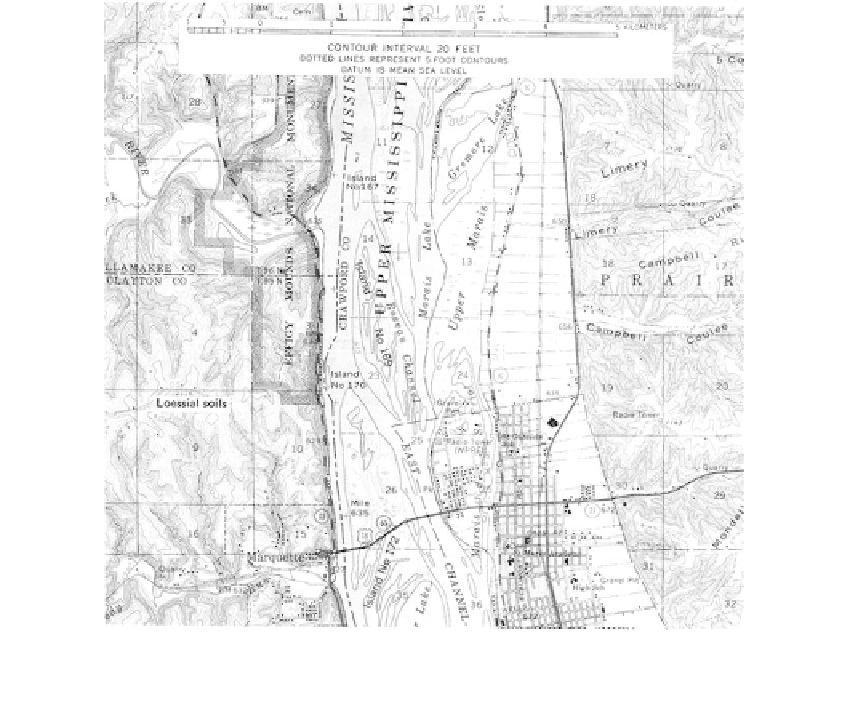Environmental Engineering Reference
In-Depth Information
Braided conditions exist within the channel, and the limits of the floodplain (underlain
primarily by clayey silts) are shown clearly by the tree line.
An intensely braided channel is illustrated in Figure 7.23. The materials forming the
high ground above the valley are loessial deposits showing typical fine-textured pinnate
and dendritic drainage patterns
(Section 7.5.3).
Meandering Streams
Meandering streams develop in easily erodible, weaker valley sediments composed of the
finer materials (silt, sand, and clay mixtures). They can occur in any valley with a flood-
plain, but are more characteristic of broad, mature valleys. As mentioned, rejuvenated
plateaus are a special case. Broad, mature valleys are likely to have contained several
streams and to have gone through several cycles of erosion and deposition during their
life, thereby developing a variable and complex stratigraphy. The geomorphic expression
of a meandering stream is given in
Figure 7.24,
a stereo-pair of aerial photos showing for-
mer river channels, cutoff channels (oxbow lakes), and point bars. The modern stream
deposits soils over the valley in forms that can be recognized and classified.
Point bar deposits:
As the stream meanders, the current erodes the outer downstream por-
tions of the channel where velocities are highest, and deposits granular materials, prima-
rily sands, in the quiet waters of the inner, upstream portions. In the early stages of
FIGURE 7.23
Example of a braided stream (Prairie du Chien, Iowa). Upland areas on both sides of the valley show the fine-
textured relief that develops in loessial soils. (From USGS topographic quadrangle sheet, scale 1:62.500.)
(Courtesy of USGS.)


